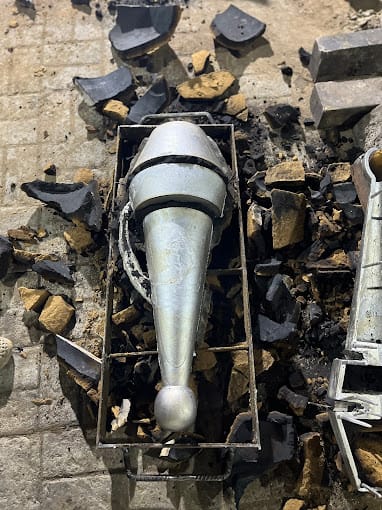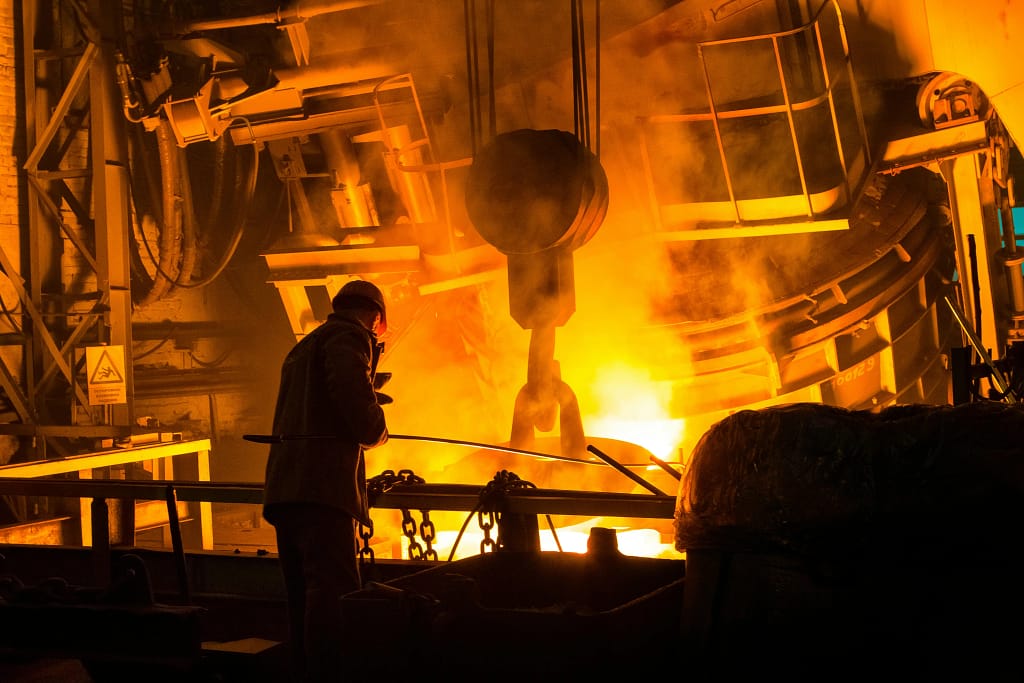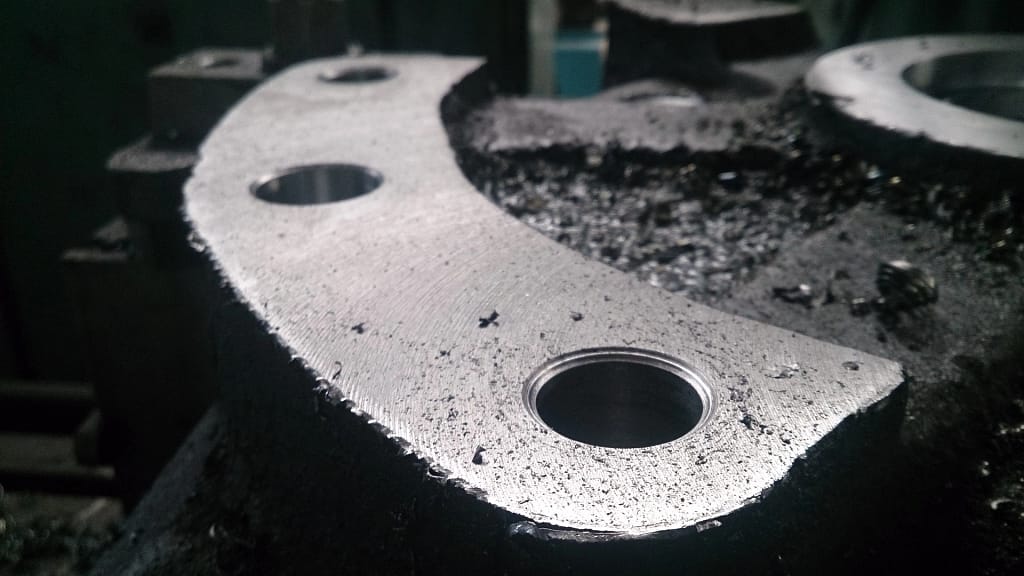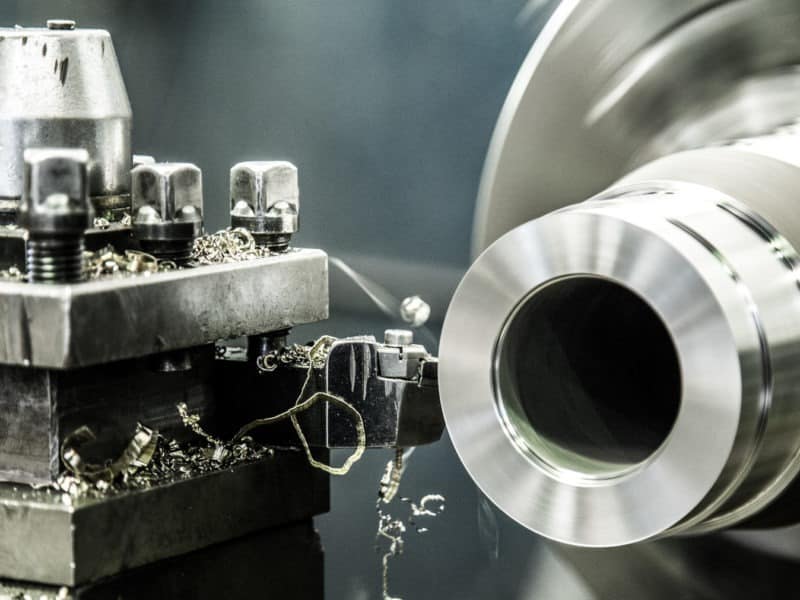Metal casting involves pouring molten metal into a mold to create a desired shape. The choice of material for metal casting depends on the desired properties of the final product, such as strength, corrosion resistance, and thermal conductivity. Common materials used in metal casting include
- Ferrous Metals
Cast Iron – High strength, wear resistance, and good fluidity.
Steel – Durable, tough, and used for heavy-duty parts.
Stainless Steel – Corrosion-resistant and used for precision parts. - Non-Ferrous Metals
Aluminum – Lightweight, corrosion-resistant, and good for automotive and aerospace.
Copper Alloys (Bronze, Brass) – Excellent conductivity and corrosion resistance.
Zinc – Low melting point, high precision, and good for small parts.
Magnesium – Lightweight and strong, used in aerospace and automotive.
Nickel Alloys – Heat and corrosion-resistant, ideal for high-performance applications. - Precious Metals
Gold – Used in jewelry and electronics.
Silver – Highly conductive, used in electrical components and jewelry.
Platinum – Resistant to high temperatures and corrosion.
Would you like more details on casting techniques or specific applications for each material?
4.Titanium Alloys
Recognized for their lightweight yet high strength and exceptional resistance to corrosion, titanium alloys are essential in industries such as aerospace, healthcare, and marine engineering. Their durability and ability to withstand harsh environments make them ideal for critical applications.

https://csgextrusion.com/wp-admin/about.php
Cobalt Alloys – Noted for their outstanding ability to endure high temperatures and resist wear, cobalt alloys are commonly used in manufacturing precision cutting tools and durable medical implants.
- Refractory Metals
Tungsten – High melting point, used for high-temperature applications.
Molybdenum – Strong and stable at high temperatures, used in aerospace and electrical components.
Tantalum – Corrosion-resistant, used in chemical processing and electronics. - Exotic Materials
Inconel – Nickel-chromium alloy, highly resistant to oxidation and corrosion, used in extreme environme - Nickel-copper alloy, strong and corrosion-resistant, used in marine and chemical applications.
Casting Techniques for Various Metals:
Sand Casting – Suitable for large parts, used for iron, steel, and aluminum.
Die Casting – Ideal for precision and mass production, used for aluminum, zinc, and magnesium.
Investment Casting – Provides high accuracy, used for titanium, stainless steel, and nickel alloys.
Centrifugal Casting – Best for cylindrical parts, used for bronze, steel, and cast iron.
Continuous Casting – Produces long sections, used for copper, aluminum, and steel. - Factors to Consider When Choosing Casting Materials
Mechanical Properties – Strength, hardness, toughness, and ductility required for the application.
Corrosion Resistance – Essential for parts exposed to harsh environments or chemicals.
Weight – Lighter materials like aluminum and magnesium are preferred for aerospace and automotive applications.
Cost – Material costs and processing expenses influence the choice. Non-ferrous metals like aluminum are cost-effective, while titanium and platinum are more expensive.
Thermal Properties – High-temperature resistance is crucial for parts exposed to heat, such as turbine blades or engine components.
Electrical Conductivity – Copper and silver are commonly chosen for electrical components due to their excellent conductivity.
Wear Resistance –metal casting Materials like cast iron and cobalt alloys are used in applications where wear and friction are concerns.
Machinability – Some metals, such as brass and aluminum, are easier to machine after casting.
Recyclability – Environmentally friendly materials like aluminum and copper alloys can be recycled without significant degradation in quality. - Common Applications of Casting Materials
Automotive Industry – Engine blocks, transmission housings, wheels (aluminum, cast iron).
Aerospace – Aircraft components, turbine blades (titanium, nickel alloys, aluminum).
Marine – Propellers, pumps, and valves (bronze, stainless steel).
Construction – Structural components, pipes (steel, cast iron).
Medical – Implants, surgical tools (stainless steel, cobalt-chromium).
Electronics – Connectors, enclosures (zinc, copper, aluminum). - Advancements in Casting Materials
Composite Materials – Combination of metals and ceramics or polymers to enhance strength and reduce weight.
Additive Manufacturing (3D Printing) – Metal casting material powders like titanium and stainless steel are used in precision casting through 3D printing techniques.
Nanostructured Alloys – Enhanced properties like higher strength and better wear resistance. - Casting Defects and Material Considerations
Even with advanced techniques, casting defects can occur. The choice of material plays a critical role in minimizing these issues.

https://csgextrusion.com/wp-admin/about.php
Common Casting Defects:
Porosity – Caused by trapped gas or shrinkage during solidification. Materials with low gas solubility, like aluminum and bronze, reduce this risk.
Cracking – Thermal stress can cause cracks. High-ductility materials like copper alloys resist cracking better.
Incomplete Fill – Low fluidity can lead to incomplete parts. Metals with good fluidity, such as cast iron and brass, prevent this issue.
Shrinkage – Happens when metal decreases in volume during the cooling process.
- Surface Treatments for Cast Metals
After casting, metals often undergo surface treatments to enhance their properties.
Heat Treatment – Improves strength, hardness, and durability (used for steel and aluminum alloys).
Electroplating – Adds a layer of metal, improving corrosion resistance (common for zinc and copper).
Powder Coating – Protects and enhances appearance (applied to aluminum and steel parts).
Anodizing – Increases corrosion resistance and wear (typically for aluminum).
- Sustainability and Eco-Friendly Casting Materials
Recycled Metals – Aluminum, steel, and copper are frequently recycled, reducing environmental impact. - Biodegradable Alloys – Research into magnesium alloys for medical implants that dissolve over time with meatal casting material .
Energy-Efficient Processes – Lower melting point metals like zinc reduce energy consumption during casting. - Testing and Quality Control of Cast Materials
Ensuring the quality and integrity of cast materials is crucial for performance and safety. Various testing methods are used to detect defects, verify mechanical properties, and ensure dimensional accuracy.


https://csgextrusion.com/wp-admin/about.php
Ultrasonic Testing (UT): Detects internal defects by transmitting high-frequency sound waves through the material.
Radiographic Testing (X-ray): Provides a clear image of internal structures, ideal for complex castings.
Magnetic Particle Inspection (MPI): Detects surface and near-surface cracks in ferrous materials.
Dye Penetrant Inspection (DPI): Reveals surface defects through the use of dyes and developers.
Destructive Testing:
Tensile Testing: Measures the material’s strength and elongation.
Impact Testing: Evaluates toughness by determining resistance to sudden force.
Hardness Testing: Verifies surface hardness and material durability.
- Casting Process Optimization
Advancements in technology allow for precise control over casting processes, reducing waste and enhancing quality.
Computer-Aided Design (CAD): Enables detailed design and simulation of cast parts before production.
Simulation Software: Predicts potential defects and optimizes mold design.
Automation and Robotics: Improves consistency and reduces human error in foundries.
meatl casting material company radwand yousaf extrusion llc .
please visit any time this site .